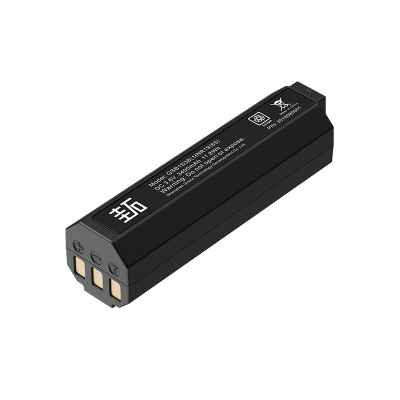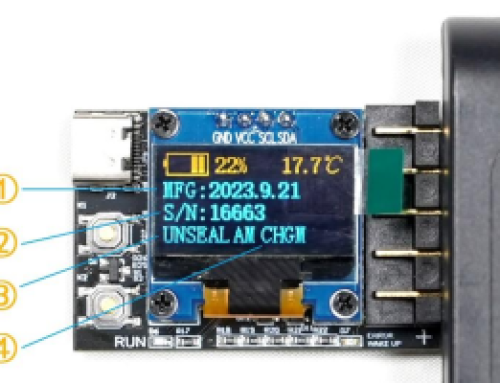Comprehensive Guide To 18650 Lithium-Ion Batteries
Introduction to 18650 Lithium Ion Battery:
As we know, 18650 stands for the physical size of the battery. Eighteen thousand six hundred fifty cells are 65mm long and 18mm in diameter. This is a simple explanation: the energy of an 18650 battery is 200-250 Wh/kg. Here are some specific data:
|
Feature |
18650 |
|
Dimensions |
18mm diameter, 65mm length |
|
Weight |
45-50 grams |
|
Capacity |
Up to 3500mAh |
|
Energy Density |
200-250 Wh/kg |
|
Discharge Rate |
Up to 20C |
|
Applications |
Laptops, power tools, e-cigarettes |
Real-World Uses for 18650 Lithium-Ion Battery:
18650 lithium-ion batteries can be used for several different purposes, including but not limited to:
- Power tools, such as electric drills and hammers;
- Electric bicycles, electric scooters, electric motorbikes and other vehicles;
- Electronic devices such as drones and intelligent robots;
- Mobile devices such as mobile phones, tablets and laptops;
- Energy storage systems such as solar photovoltaic systems and wind power systems;
- Lighting devices, electric toys, portable power supplies, and other consumer electronics;
In short, 18650 Li-ion batteries are widely used in applications that require high energy density, long life, and lightweight batteries.
Advantages of 18650 Lithium-Ion Battery:
- High energy density: The 18650 lithium-ion battery has high energy density, compared with other types of batteries, and can store more energy in the same volume.
- Long life: 18650 lithium-ion batteries have a long life and generally can be charged and discharged hundreds of times or more than other rechargeable batteries such as nickel-metal hydride batteries, nickel-cadmium batteries, and other long life.
- Low self-discharge rate: 18650 lithium-ion batteries have a low self-discharge rate, so there is little power loss when they are stored for a long time.
- High discharge current: 18650 lithium-ion batteries have high discharge current, which can support the use of high-power equipment.
- High charging efficiency: 18650 lithium-ion batteries are highly efficient and can be fully charged quickly.
In short, 18650 lithium-ion batteries have the advantages of high energy density, long life, low self-discharge rate, high discharge current, and high charging efficiency. Therefore, they are widely used in electronic devices, power tools, electric vehicles, and other fields.
Disadvantages of 18650 Lithium-Ion Battery:
- Safety Risk: Lithium-ion batteries may overheat, catch fire, or explode under unsuitable conditions, posing a safety risk.
- Expensive: Compared with other standard batteries, 18650 Li-ion batteries are relatively expensive, which may increase the cost of the product.
- Power degradation: Lithium-ion batteries degrade with time and use and will eventually need to be replaced.
- Special charger required: Due to the special characteristics of lithium-ion batteries, a special charger is required for charging; otherwise, the battery’s life and safety may be affected.
- Not suitable for high-current demands: Although 18650 Li-ion batteries provide high energy density, they may not be suitable for devices with high current demands as they may overheat or experience other problems.
Steps for assembling an 18650 Li-ion battery pack to a 72V50Ah battery pack:
Determine the number of batteries required: the 72V battery pack requires 20 series cells (each with a voltage of 3.6V) and five parallel cells (each with a capacity of 10Ah).
Purchase suitable 18650 batteries: Choose 18650 batteries with a capacity of 10Ah and make sure the battery brand, model, voltage, and capacity are the same.
Test the batteries: Test the voltage and internal resistance of each 18650 battery and filter out the batteries with similar voltage and internal resistance to form a battery pack.
Series connection: Connect 20 batteries in series, and make sure each battery’s positive and negative terminals are connected correctly to avoid short circuits.
Parallel batteries: Connect five sets of 20 series batteries in parallel. Make sure the positive and negative terminals are connected correctly to avoid short circuits.
Packing the Batteries: Pack the batteries in an appropriate battery box to protect and secure their batteries.
Perform Battery Testing: Before use, the entire battery pack must be tested to ensure it works properly and meets design requirements.
Combination of 18650 Li-Ion Battery Pack Notes:
18650 Li-Ion batteries are standard and often used in applications such as electronic devices and power tools. Combining multiple 18650 Li-ion batteries can form a larger-capacity battery pack. 18650 Li-ion battery matching needs to consider the following aspects:
Battery capacity: The same model of 18650 lithium batteries with different capacities should choose the same battery capacity for the combination to ensure the battery voltage and capacity stability box.
Battery voltage: The nominal voltage of the 18650 lithium battery is 3.7V, but its voltage range is 3.0-4.2V when used. The battery pack’s voltage needs to be determined according to the use. Generally, multiple single cells are connected in series to achieve the required voltage.
Number of batteries: According to the voltage and capacity to be combined, choose the appropriate number of batteries to be combined. Generally speaking, the higher the number of batteries, the higher the capacity of the battery pack, but at the same time, it also increases the size and weight of the battery pack.
Battery protection circuit: Since over-discharge and over-charge of 18650 lithium batteries can cause damage to the batteries, it is necessary to consider adding protection circuits when assembling the battery pack to ensure the safety and stability of the battery box.
It should be noted that the assembly of 18650 lithium batteries requires specific battery knowledge and skills; non-professionals are not recommended to assemble. Therefore, I recommend TEFOO ENERGY standard lithium batteries, which are convenient for operators to carry out mobile indoor and outdoor work. Providing continuous, efficient, and stable mobile power supply becomes the most extensive guarantee for the regular operation of such equipment. The program adopts a high-performance electric core so that the whole battery has a high energy ratio, is lightweight, has a small volume, has high cycle life, has high safety, and has high consistency. The battery is straightforward, and the original battery can be directly replaced on-site.
As a professional 18650 battery pack manufacturer, our team is always committed to design, assemble and test to provide our customers with the safest and perfect 18650 battery pack. We offer a full range of professional battery solutions from cell chemistry analysis, BMS design, to 18650 lithium battery assembly solutions.
Our CTO has many years of intelligent experience in battery chemistry research and 18650 battery manufacturing. Engineers customize each BMS according to your needs. we specify the brand of IC, MOS and other components to ensure the quality of BMS. Our engineering team is dedicated to calculate the lithium-ion battery assembly solution. We design the best assembly structure based on temperature, internal resistance, and insulation.
At Tefoo Energy, with over 15 years of experience in battery design and manufacturing, we can design Li-ion 18650 battery packs for different application devices. Our key areas of expertise include:
- Industrial Instruments
- Medical Instruments
- Robotics
- Specialty equipment




